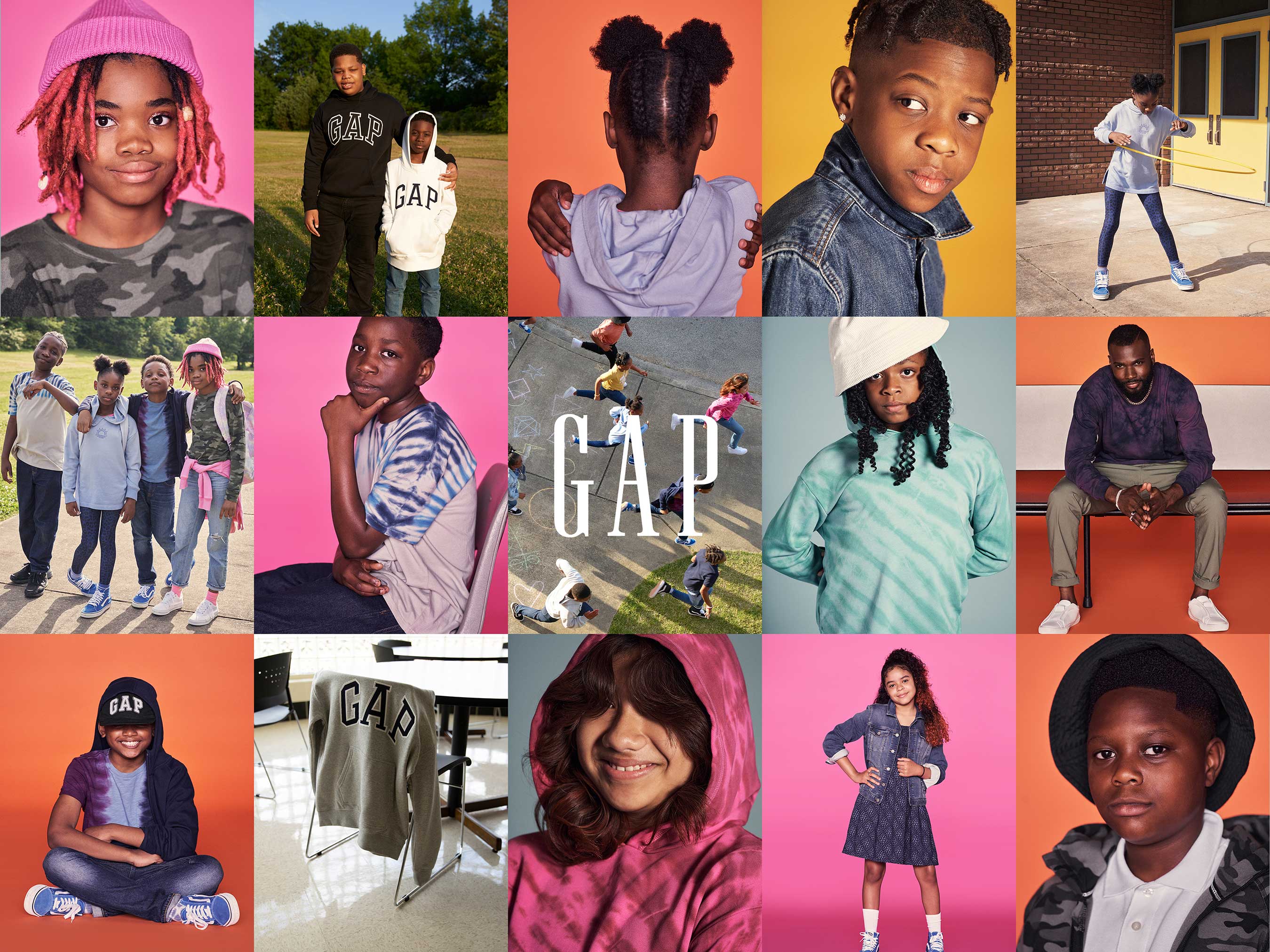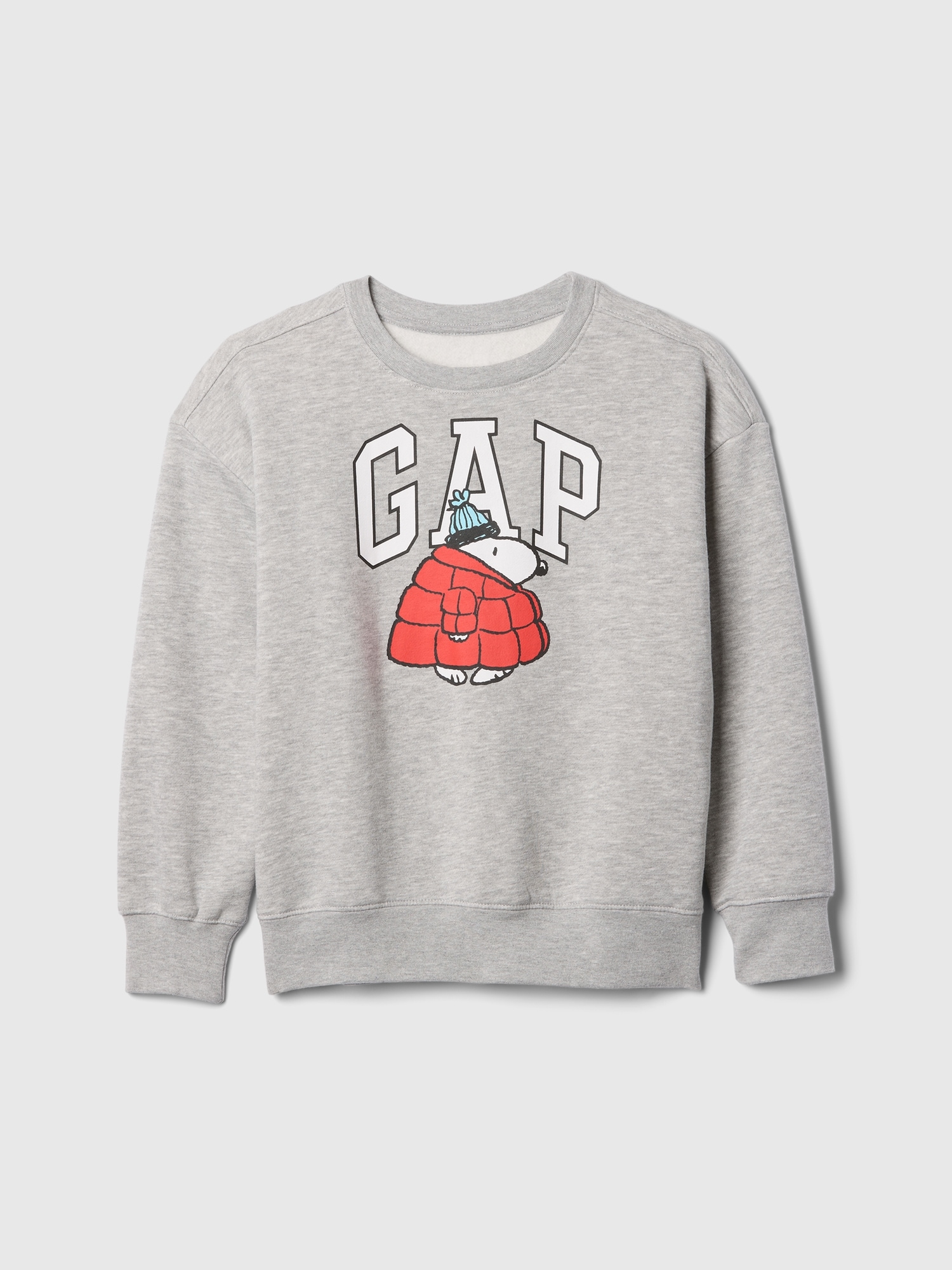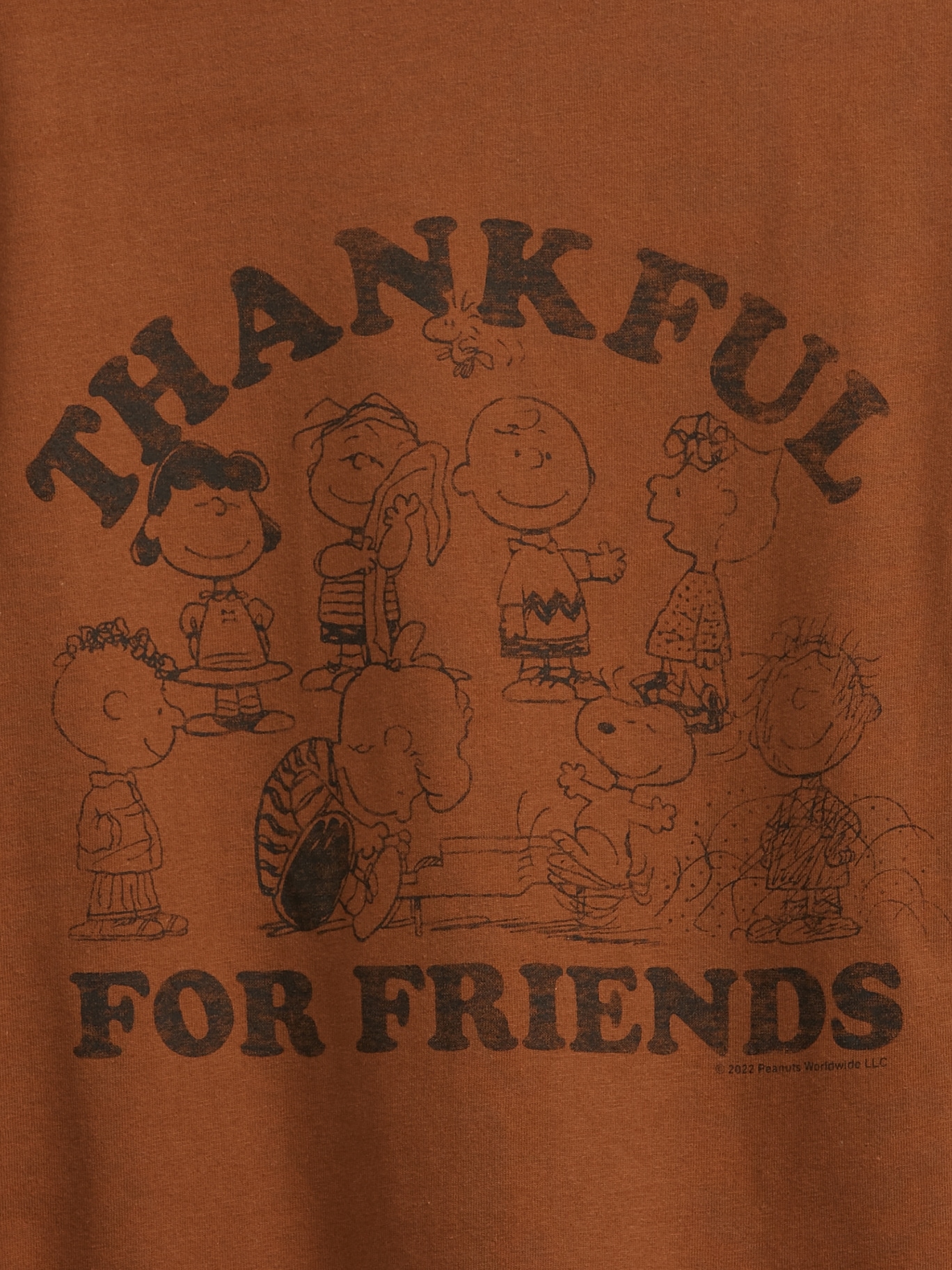GapKids - Comfort For Growing Moments
When we think about clothes for little ones, so it's almost natural to picture bright colors, soft fabrics, and styles that let children be themselves. That, is that what GapKids has aimed to offer for a long, long time. It's about providing clothing that feels good, looks good, and holds up to the energetic life of a child. You know, from those first wobbly steps to running around the playground, kids need clothes that keep up with them, without being fussy or uncomfortable.
There's something quite special about seeing children dressed in clothes that fit them just right, yet also give them room to move and grow. It's not just about what they wear, but how it makes them feel. Clothes should feel like a second skin, allowing for all sorts of adventures, whether it's building a fort in the living room or exploring the backyard. We want our children to be comfortable, truly comfortable, in every moment of their day, from morning play to evening wind-down. It's a simple desire, but a very important one.
This idea of comfort and freedom for kids is something many parents look for, and it shapes how they choose what their children wear. It’s about more than just fashion; it’s about practical wear that supports a child's active life. When you pick out something for a child, you're not just picking a shirt or a pair of trousers; you're picking something that will be part of their daily experiences, their learning, and their play. It's about making sure their clothes are as ready for anything as they are, every single day, more or less.
Table of Contents
- What Makes Clothes Comfortable for Kids?
- Looking Closer - What Can We Learn About Fabric?
- Why Do We Care About Durability in GapKids?
- The Everyday Look of GapKids
- How Do Styles Change with GapKids?
- Considering the Practical Side of GapKids Clothes
- The Art of Choosing the Right Fit for GapKids
- Beyond the Seams - The Wider View of GapKids
What Makes Clothes Comfortable for Kids?
When you think about what makes clothing feel good for a child, it often comes down to a few key things. First off, there's the material itself. Is it soft against the skin? Does it feel scratchy or rough? Children have delicate skin, so fabrics that are gentle are usually a big win. Things like soft cotton or blends that have a nice give to them tend to be favorites. You want something that lets their skin breathe, too, especially when they are running around or playing games. A fabric that feels cool in warm weather and offers a bit of warmth when it's chilly is often a good choice, as a matter of fact.
Then there's the way the clothes are put together. Are the seams smooth, or do they dig in? Are there any tags that might irritate a child's neck or back? Sometimes, even the smallest detail can make a big difference in how comfortable a piece of clothing truly feels. A good fit means there's enough room for movement, but not so much that the clothes get in the way. It’s about finding that just right balance, so a child can bend, stretch, and tumble without feeling restricted. This is particularly important for little ones who are constantly exploring their surroundings, you know.
The design of the clothes plays a part as well. Are there buttons or zippers that are easy for little fingers to manage, or are they too fiddly? Simple designs often mean less fuss, which can be a big help for parents and children alike. Elastic waistbands that don't pinch, necklines that are easy to pull over a head, and sleeves that don't ride up are all little things that add up to a lot of comfort. It’s about making everyday dressing a bit easier and more pleasant for everyone involved, especially for those busy mornings. Basically, it’s about letting kids be kids, without their clothes getting in the way.
Looking Closer - What Can We Learn About Fabric?
When you really start to look at fabric, like, really get in close, you begin to see things you might miss at a casual glance. Think about how your own eyes see the world around you; that's one way to view things. But then, if you had a tool that could show you things many times bigger, you'd notice all the tiny threads and how they are woven together. It's a bit like how a special looking glass can show you things at a much higher level of detail, where even the smallest fiber becomes clear. You see, a regular light-based viewer can show you a lot about the surface, but if you want to see things at a truly tiny level, you need something different, something that shows a very plain, perhaps even a non-colored view, to really make out the structure. This is how you can truly notice the way a piece of fabric is put together, the little bits that make it what it is, and how it might hold up over time, sort of.
Sometimes, what you see in a picture, even a very clear one, might not tell the whole story. You might see a nice image, perhaps one that looks like a macro photo taken by someone who takes many pictures of small insects for a collection of pictures. But that picture, no matter how sharp, can only show you so much. It won't tell you how the fabric feels, or how it will stand up to repeated washes. You might even find it hard to figure out the exact type of material just from a picture, just like it can be tough to identify the specific kind of a tiny bug from a single image. The true test of fabric for GapKids, or any clothing, comes from touching it, wearing it, and seeing how it performs in real life, you know.
Understanding fabric means thinking about its strength, how it stretches, and how it breathes. Some fabrics are made to be very durable, able to withstand lots of play and many trips through the washing machine. Others are chosen for their softness, or for their ability to keep a child cool or warm. It’s about matching the fabric to the purpose of the clothing. A sturdy denim for play, a soft jersey for sleeping, and a flexible knit for active wear – these choices are all made with the child’s comfort and the clothing’s longevity in mind. So, in some respects, the fabric is the foundation of good children's clothing.
Why Do We Care About Durability in GapKids?
Durability is a big deal when it comes to children's clothing, especially for a brand like GapKids. Kids are active, really active. They crawl, they run, they jump, they slide, and they explore every corner of their world. Their clothes need to be able to keep up with all that movement and still look good afterwards. It’s not just about surviving one wear; it's about surviving many wears, many washes, and many adventures. A piece of clothing that falls apart after a few uses isn't helpful to anyone, is it?
Parents often look for clothes that can be passed down from one child to another, or at least last through a season of growth spurts and daily wear. This means the stitching needs to be strong, the fabric needs to resist tears and holes, and the colors need to stay bright, even after repeated washing. Think about the knees of trousers, or the elbows of jumpers – these are often the first places to show wear and tear. Good quality clothing anticipates these stress points and builds in extra strength to help them last. It's about getting value from what you buy, actually.
Beyond just lasting, durable clothes also mean less worry for parents. You don't have to constantly check for rips or fading. You can trust that the clothes will hold up to whatever your child throws at them, literally. This gives children the freedom to play without limits, and gives parents peace of mind. It’s a simple concept, but it makes a significant difference in the daily lives of busy families. And, in a way, it makes choosing clothes a simpler task, too.
The Everyday Look of GapKids
The style of GapKids often leans towards classic, easy-to-wear pieces that fit well into a child's everyday life. You'll find lots of basics: simple t-shirts, comfortable trousers, and easy-to-layer jumpers. These are the kinds of clothes that can be mixed and matched, making getting dressed a bit less complicated for both kids and parents. It’s about creating a wardrobe that is versatile and practical, rather than overly trendy or complicated. This means the clothes don't go out of style quickly, which is a definite plus for busy families, naturally.
Colors are often cheerful and friendly, but not overwhelming. You'll see a mix of bright shades, soft pastels, and neutral tones that work well together. This approach to color helps to keep the clothes looking fresh and appealing, without being too distracting. Patterns are usually simple and fun, like stripes, polka dots, or friendly animal prints. These designs appeal to children and add a touch of playfulness to their outfits. It's about making clothes that kids feel good wearing, and that parents feel good about buying, too.
The overall look is one of casual comfort. It's not about dressing up for a special occasion, but about providing clothes for everyday adventures. From school days to weekend playdates, the clothes are made to be lived in. This focus on practicality and comfort means that children can move freely and feel at ease, no matter what they are doing. It's about supporting their active lives with clothing that is both functional and pleasant to wear, every single day, more or less.
How Do Styles Change with GapKids?
While GapKids has a strong foundation in classic styles, they also introduce new looks and ideas with each passing season. This keeps things fresh and interesting, without straying too far from their core commitment to comfort and practicality. You might see new color palettes, different prints, or updated versions of favorite pieces. It’s about offering variety while still staying true to what makes the brand appealing to families. They tend to follow broader trends in children's fashion, but always with their own spin, making them wearable for everyday life, sort of.
Sometimes, new styles might involve different fabric blends that offer improved comfort or durability. Other times, it could be about introducing new cuts or shapes that are popular with children. For instance, a new type of trouser fit or a different kind of jumper design might appear. These changes are usually subtle, ensuring that the clothes remain easy to wear and care for. It's about gentle evolution, rather than drastic shifts, which helps parents know what to expect from the brand, anyway.
The goal is to keep the clothing feeling current and appealing to children as they grow, while still holding onto the qualities that parents value. This means a consistent focus on quality materials and thoughtful construction, even as the specific designs might shift a little. It’s a balancing act, really, between offering something new and maintaining a familiar sense of comfort and dependability. So, you know, they keep things fresh without losing their identity.
Considering the Practical Side of GapKids Clothes
Beyond just how clothes look and feel, there's a huge practical side to choosing clothing for children. This involves things like how easy they are to clean, how well they stand up to repeated washing, and whether they are simple for children to put on and take off by themselves. For parents, time is often a precious thing, so clothes that require complicated care instructions or are difficult to manage can be a real headache. Simple care is often a top priority, you know.
Think about how many times a child's clothes need to be washed in a week. It's often a lot! So, fabrics that can go straight into the washing machine and dryer without shrinking or losing their shape are incredibly helpful. Colors that don't fade quickly are also a big plus, keeping clothes looking good for longer. This practical approach means that the clothes are not just for special occasions, but for the everyday mess and fun that comes with raising children. It’s about making life a bit simpler for everyone, really.
Also, as children get older, encouraging them to dress themselves becomes important. Clothes with simple fastenings, like elastic waistbands or easy-to-use snaps, can make a big difference. This helps children build independence and confidence. It’s about designing clothes that work for the whole family, from the smallest child learning to pull up their own trousers, to the busy parent managing the laundry pile. These little practical details add up to a lot of convenience, in a way.
The Art of Choosing the Right Fit for GapKids
Getting the fit just right for children's clothes is a bit of an art. Children grow quickly, so you want clothes that aren't too tight but also not so big that they trip over them. A good fit allows for freedom of movement, letting kids run, jump, and play without feeling restricted. It’s about finding that sweet spot where the clothes are comfortable today and still offer a little room for growth in the near future. This often means looking at size charts and maybe even measuring your child, just a little.
Different styles might also have different fits. Some items are meant to be a bit looser, like a relaxed-fit jumper, while others, like leggings, might be more fitted. Understanding these differences helps in choosing the right size for the particular piece of clothing. It's not just about the age on the label; it's about how the clothing feels on your child's body and how it allows them to move. A well-fitting garment can make a child feel more confident and ready for anything, too.
Sometimes, parents might buy a size up to get more wear out of an item, especially for things like outer layers or trousers. However, it's important that the clothes aren't so big that they become a hazard or are uncomfortable. Sleeves that are too long or trouser legs that drag can get in the way of play. So, while a little room to grow is good, getting the current fit mostly right is often the best approach for daily wear. It’s a balance, pretty much, between today's comfort and tomorrow's growth.
Beyond the Seams - The Wider View of GapKids
When you consider a brand like GapKids, it’s not just about the individual pieces of clothing. It's about the bigger picture, the overall idea of providing comfortable, durable, and approachable clothing for children. It's a name that many people know, much like other well-known names that you hear about often, perhaps like Gamestop, Moderna, Pfizer, Johnson & Johnson, AstraZeneca, Walgreens, Best Buy, Novavax, SpaceX, or Tesla. These names, whether in retail or other areas, become part of the general conversation, and they represent something familiar to many people. This kind of widespread recognition often comes from a consistent offering that meets a real need for families, you know.
The idea of a brand that caters to children’s everyday needs, focusing on practical items that stand up to play, has a broad appeal. It’s about offering reliable choices that parents can trust, season after season. The clothes are designed to be part of a child's life as they learn and grow, supporting their adventures with comfortable, easy-to-wear pieces. This wider view encompasses not just the fabric and the fit, but the whole experience of dressing children in clothes that feel good and are made to last, sort of.
Ultimately, it comes back to the child at the heart of it all. Clothes should support their natural curiosity and energy, allowing them to explore and play without restriction. A brand that understands this, and consistently delivers on it, becomes a trusted part of many family wardrobes. It’s about making sure that the clothing is a help, not a hindrance, in a child’s busy and exciting world. And that, in a very real sense, is what makes a brand for children truly meaningful, at the end of the day.

Gap Welcomes Kids Back to School with Educational Changemaker, David

Gap公式オンラインストア | GapKids | ピーナッツ リラックス GAPロゴパーカー

GapKids | Peanuts Graphic T-Shirt | Gap